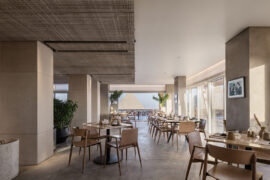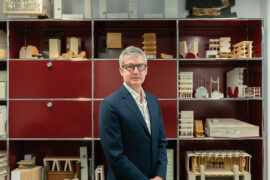With billions of years experience designing the most complex, efficient and waste-free systems, it’s no wonder designers are looking to nature for inspiration. In this video, we hear from four leading architects and designers as they discuss how they apply Biomimicry to their designs and how they went from inspiration to deeper learning and ultimately application to their work.
November 21st, 2014
With billions of years experience designing the most complex, efficient and waste-free systems, it’s no wonder designers are looking to nature for inspiration. What this awereness has lead to, is Biomicicry – a design approach that recognises the genius of nature and its highly advanced problem solving skills, and seeks to learn from it.
In this video, we hear from four leading architects and designers as they discuss how they apply Biomimicry to their designs and how they went from inspiration to deeper learning and ultimately application to their work.
Interface see biomimicry as a tool for solving design challenges, and apply its principles to the conceptualisation of their products.
Interface
interfaceflor.com.au
INDESIGN is on instagram
Follow @indesignlive
A searchable and comprehensive guide for specifying leading products and their suppliers
Keep up to date with the latest and greatest from our industry BFF's!

For Aidan Mawhinney, the secret ingredient to Living Edge’s success “comes down to people, product and place.” As the brand celebrates a significant 25-year milestone, it’s that commitment to authentic, sustainable design – and the people behind it all – that continues to anchor its legacy.

QIP recently held a significant event in Sydney, bringing together LGBTQI+ people across the property and construction industry.

The Sustainability Summit panel delves into innovative models such as the Nightingale Housing model and the AssembleFutures concept.
The internet never sleeps! Here's the stuff you might have missed

Pedrali’s Nemea collection, designed by Cazzaniga Mandelli Pagliarulo, marks 10 years of refined presence in hospitality and commercial spaces around the world. With its sculptural timber form and enduring versatility, Nemea proves that timeless design is never out of place.

Leading by design, Erik L’Heureux has recently taken the helm of Monash University’s Department of Architecture, and so a new and exciting journey begins for both L’Heureux and the University.